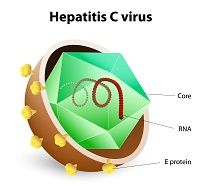Article
Researchers Test New Model for Predicting Hepatitis C Risk
Author(s):
Researchers from the University of Michigan say a new model that uses routine laboratory tests and machine-learning methods to better predict hepatitis C progression can be used to guide patients and doctors through important treatment decisions.

Researchers from the University of Michigan say a new model that uses routine laboratory tests and machine-learning methods to better predict hepatitis C progression can be used to guide patients and doctors through important treatment decisions.
The risk prediction model aims to help identify which patients chronically infected with the virus have the greatest need for new anti-viral drugs, according to a news release from the University of Michigan where the study was conducted. Results of the study and a discussion of the model were published in the June issue of the journal Hepatology.
“Offering immediate treatment to patients identified as high risk for poor health outcomes would allow these patients to benefit from highly effective treatments as other patients continue to be monitored and their risk assessment updated at each clinic visit,” lead study author Monica Konerman, MD, MSc., a fellow in gastroenterology at the University of Michigan Health System, said in the release.
If left unchecked, chronic infection of hepatitis C can severely damage the liver over time and may lead to cirrhosis or cancer of the liver and a need for a liver transplant. While new antiviral drugs to treat the virus have high cure rates, they come with a fat price tag that has prompted debate about when to treat chronically infected patients and who will pick up the tab.
Researchers applied novel statistical methods that incorporate longitudinal data in an effort to improve upon the limited accuracy of existing predictive models of risk disease progression in chronic hepatitis C, according to the study abstract. They analyzed data from patients in a previous National Institutes of Health study known as the Hepatitis C antiviral Long-Term Treatment against Cirrhosis (HALT-C) trial.
The new model uses more routine lab values than traditional models and machine learning methods that can better analyze how those values change over time in a way that helps doctors predict the health outlook in the next 12 months of patients diagnosed with hepatitis C, the news release stated. It uses clinical data such as a patient’s age, body mass index (BMI), virus type and routine lab measurements to estimate liver disease progression.
According to the new model, 6% of patients predicted as low risk will have cirrhosis complications in the next year whereas 56% in the high-risk group will have it, the release states. Such information can help doctors determine which patients treatment needs are more urgent and is also useful in planning overall management of the disease for any patient, according to the article.
The risk prediction model can be easily integrated into electronic medical records as a clinical decision tool for doctors, noted the authors. It can also help to establish how often a patient needs to visit the doctor and have laboratory tests conducted for disease monitoring.
“Ideally we would treat all patients,” Konerman said. "Until logistic and financial barriers are solved, clinicians and policy makers are faced with trying to target these therapies to patients with the most urgent need. The model allows us to identify these patients with greater accuracy.”




